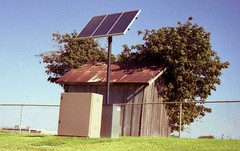A Solyndra investor, in an e-mail sent to the White House in late 2009, asked why the government had been willing to offer the solar start-up so much money.
“One of our solar companies with revenues of less than $100 million (and not yet profitable) received a government loan of $580 million,” the investor, Brad Jones of Redpoint Ventures, wrote in December 2009 to Lawrence H. Summers, then the president’s chief economic adviser, referring to Solyndra. “While that is good for us, I can’t imagine it’s a good way for the government to use taxpayer money.”
The investment, Mr. Jones said, demonstrated broad problems with the government loan program. “The allocation of spending to clean energy is haphazard; the government is just not well equipped to decide which companies should get the money and how much,” he wrote.
If a company like Solyndra can generate energy at competitive prices, why would they need $580 million in government aid?
And if they can’t generate energy at competitive prices, how are they going to pay back the loan?
“What’s terrifying is that after looking at some of the ones that came next, this one started to look better,” said one April 2010 e-mail, referring to the Solyndra decision, and others that followed. “Bad days are coming.”

